- News
- Reviews
- Bikes
- Components
- Bar tape & grips
- Bottom brackets
- Brake & gear cables
- Brake & STI levers
- Brake pads & spares
- Brakes
- Cassettes & freewheels
- Chains
- Chainsets & chainrings
- Derailleurs - front
- Derailleurs - rear
- Forks
- Gear levers & shifters
- Groupsets
- Handlebars & extensions
- Headsets
- Hubs
- Inner tubes
- Pedals
- Quick releases & skewers
- Saddles
- Seatposts
- Stems
- Wheels
- Tyres
- Tubeless valves
- Accessories
- Accessories - misc
- Computer mounts
- Bags
- Bar ends
- Bike bags & cases
- Bottle cages
- Bottles
- Cameras
- Car racks
- Child seats
- Computers
- Glasses
- GPS units
- Helmets
- Lights - front
- Lights - rear
- Lights - sets
- Locks
- Mirrors
- Mudguards
- Racks
- Pumps & CO2 inflators
- Puncture kits
- Reflectives
- Smart watches
- Stands and racks
- Trailers
- Clothing
- Health, fitness and nutrition
- Tools and workshop
- Miscellaneous
- Buyers Guides
- Features
- Forum
- Recommends
- Podcast
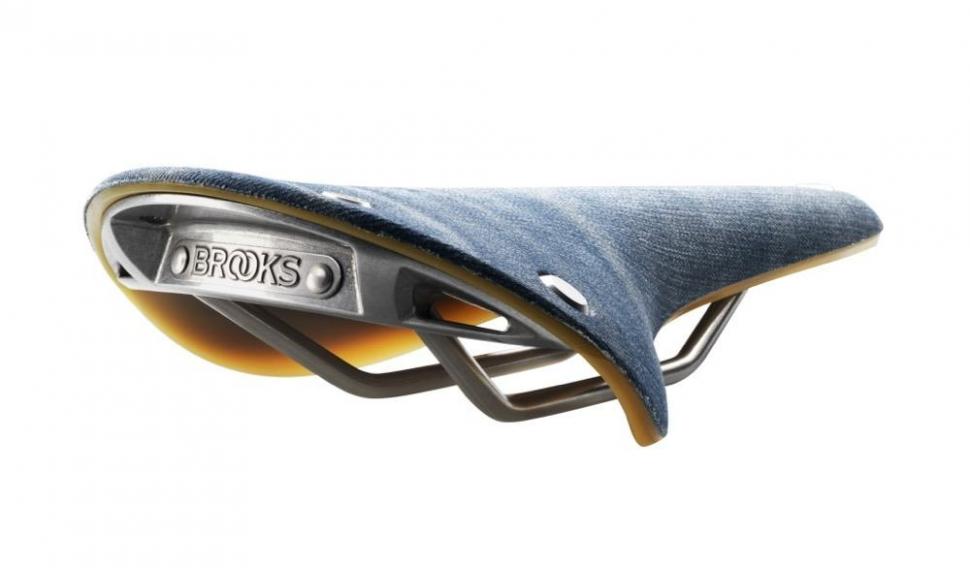 Brooks Levis Cambium 1
Brooks Levis Cambium 1Brooks saddles (and more) - get to know the Brooks England product range
Brooks England, the traditional leather bicycle saddle maker, is one of the most iconic and legendary bicycle brands. Its products are the epitome of style and luxurious comfort.
Brooks still makes leather saddles in Smethwick in the West Midlands using the same tools and processes first developed when the company founded in 1889, and they are still very much made by hand.
It’s now owned by part of a group of companies including Selle Royal and Fizik and this ownership has coincided with a significant expansion of the Brooks product range. It makes much more than just leather saddles and the fortunes of the company have prospered over the years thanks to the surge of interest in cycling and a wider audience, many appreciative of cycling's history and heritage.
More than just traditional Brooks leather saddles, the range also includes modern vulcanised saddles, helmets, bags, bar tape, tools, helmets and much more. Here then is an overview of the Brooks product range.
The Cambium is the newest Brooks saddle. Launched in 2014 it ushered in a new approach to saddle construction for the British company, one utilising modern details fused with the same basic structure as one of its leather saddles. It’s also made in Italy, not England.
Instead of leather stretched over the metal rails, a vulcanised natural rubber and cotton canvas textile upper was created that still offers the comfy hammock buttock cosseting but without the long breaking-in period of the leather saddles, so it’s immediately comfortable. It’s lighter too, the lightest Brooks saddle ever made, especially if you choose the carbon fibre rail version that is available.
The Cambium is available in a range of choices. There’s the C19 C17, C15 and C13 which vary by width - the C13 is the narrowest, the C19 is the widest.
The C17, C15 and C13 are available in a ‘carved’ edition which features a cutaway channel down the centre of the saddle for relieving pressure in the perineal region.
The C13 also comes in three widths: 132, 145 and 158mm in each of the standard and carved versions. Plenty of choice then.
Prices range from £110 up to £160 for carbon fibre rails.
The B17 is the iconic Brooks leather saddle, the flagship model in its range. It was the saddle that started it all, first introduced in 1890 and it really hasn’t changed much in that time.
Brooks still sources naturally and slowly raised cows to produce the 5mm thickness required for durability. Only the best will do for its saddles and the high quality of finish that makes a Brooks saddle such a desirable product.
It’s one of the favoured choice of touring, Audax and long distance cyclists. A piece of leather stretched across a metal frame provides a hammock for your bum and flexes as you pedal, while the leather softens with age and conforms to suit the shape of the owner. A Brooks leather saddle is very much a saddle for life.
This ‘breaking in’ period is a legendary right of passage for all Brook saddle owners. The leather softens and wears to confirm to your bum, and the saddles understandably become highly prized possessions. Provided they are looked after and proofed against rain, they can and do last many many years.
The B17 Standard kicks off the range at £90 but you can save some weight with the B17 Special Titanium for £185.
The B15 Swallow is a reincarnation of a Brooks saddle first patented in the 1930s and successfully reintroduced a few years ago. It has a narrower and longer profile aimed at sporty riding, while scalloped sides improve thigh clearance.
The saddle is made in the same way as the B17, but the original had the underside hand stitched together, later replaced by rivets for the production version. It’s a lot lighter than a B17 but it’s still heavier than any other race saddle.
The B15 Swallow is available with chrome rails for £135 and titanium rails will set you back £230.
Some cyclists find the B17 too wide so for those that prefer a narrower saddle, Brooks developed the Swift. It was billed as the “youngest gentleman’s racing saddle in the Brooks range.”
The Swift is 150mm wide and is available with steel (510g) or titanium rails (390g) and costs from £110.
If the hammocky comfort of the stretched leather saddle isn’t enough for you, Brooks saddles are also available with springs. The Flyer is a classic sprung saddle ideal for touring and long distance cycling and is available in a women’s version, the Flyer S.
The Flyer is based on the B66 Champion that was first introduced in 1927. It uses the same leather top as the B17 with the added suspension of two rear springs.
Colt
The Colt is a saddle that traces its history back to 1979 when it was introduced as a modern design ideally suited for an 80s steel road bike, with solid sides and a snub nose without the traditional bag loops on the back.
It’s only available in one version with steel rails and costs £110.
Aged saddles
If you want a Brooks leather saddle that is instantly comfortable without the famous breaking-in period, then the company offers an Aged option on a few of its saddles.
The B17 Aged (£90) keeps the same shape as the regular B17 but uses a leather that is softer so it is comfortable from day one. There’s also a Flyer Aged (£92) and B67 Aged (£92).
Helmets
Last year Brooks became more than just a saddle manufacturer, entering the helmet market with two new helmets, the Harrier and Island.
It’s not actually the first time Brooks has entered the helmet market, though. Back in the 1950s it marketed helmets under the Lycett, name, but they were moped helmets - this was a time well before cycling helmets really existed, they only became popular during the late 1980s with an advance in the expanded polystyrene foam that has allowed light and relatively strong helmets to be produced.
The Island helmet (£110) has been designed for urban and city cyclists and is made with a polycarbonate outer shell with one front and rear vent and an understated appearance. The rotary retention device allows easy adjustment.
The Harrier (£149) is aimed at performance cyclists and has been designed to be aerodynamic and well ventilated with four cooling channels providing airflow over the head.
Brooks has been making bags since the 1880s but it has been slowly the range over the years, and it now includes shoulder bags, back packs, tool bags, saddle bags, frame bags, holdalls, briefcases and front and rear panniers. We won't go through them all, the range is huge, so here are a few highlights.
This is the Pickzip Backpack (£230) a medium sized backpack with a zip opening to make it easy to get at the contents, with enough space for a laptop in the internal sleeve pocket.
The Suffolk Rear Pannier (£99) is made to be waterproof with a roll-top closure design and a large easily accessible external pocket and side pockets for those essentials you need easy access to.
The Crosby Shoulder Bag (£220) is made in Italy and is a stylish shoulder bag with an easily adjustable carrying strap but it can be secured around the waist when cycling, and the top flap has a magnetic closure.
Accessories
There is a wide range of accessories, from wallets, passport holders, pumps, bar tape, grips and even lights to add to your Brooks collection.
The Brooks MT21 Multitool (£45) is an extremely lovely bit of engineering and very refined. It’s a rugged design with an all-steel construction and 21 tools that cover most bases. A leather colour, available in different colours, protects the tools when it’s not in use.
If you have a Cambium saddle you might like to finish your bike off with matching Cambium Bar Tape (£35). It’s made from organic cotton canvas in colours that match the saddle.
To see the full Brooks product range head to www.brooksengland.com/en_uk
About road.cc Buyer's Guides
The aim of road.cc buyer's guides is to give you the most, authoritative, objective and up-to-date buying advice. We continuously update and republish our guides, checking prices, availability and looking for the best deals.
Our guides include links to websites where you can buy the featured products. Like most sites we make a small amount of money if you buy something after clicking on one of those links. We want you to be happy with what you buy, so we only include a product if we think it's one of the best of its kind.
As far as possible that means recommending equipment that we have actually reviewed, but we also include products that are popular, highly-regarded benchmarks in their categories.
Here's some more information on how road.cc makes money.
You can also find further guides on our sister sites off.road.cc and ebiketips.
road.cc buyer's guides are maintained by the road.cc tech team. Email us with comments, corrections or queries.
David worked on the road.cc tech team from 2012-2020. Previously he was editor of Bikemagic.com and before that staff writer at RCUK. He's a seasoned cyclist of all disciplines, from road to mountain biking, touring to cyclo-cross, he only wishes he had time to ride them all. He's mildly competitive, though he'll never admit it, and is a frequent road racer but is too lazy to do really well. He currently resides in the Cotswolds, and you can now find him over on his own YouTube channel David Arthur - Just Ride Bikes.
Latest Comments
- chrisonabike 2 sec ago
That's a bit like refusing to get a sofa because you've got cats or dogs "because every other inch of the house becomes explicitly for animals, in...
- Sniffer 12 min 25 sec ago
Agreed, and we should be investigating embezzlement of £100K....
- dubwise 21 min 54 sec ago
The good old uci at it again. del Torro fined for bringing the sport into disrepute because of a broken zip on his skinsuit. Beggars belief.
- leedorney 34 min 5 sec ago
Scotland's a beautiful place with beautiful people! - done hol there recently and the roads are fantastic, cool tho 👍
- bensynnock 40 min 34 sec ago
Have you been reading the comments in the Daily Echo ?
- Mr Anderson 44 min 23 sec ago
I decided to delete my posting immediatley after it was made....
- Jvtrigo 1 hour 7 min ago
Just got my set, the actual weight for rim brakes are 692g front wheel and 860g rear wheel. So a total of 1,552g (with rim tape, and no valve).
- OnYerBike 1 hour 15 min ago
Obviously it's a good thing that manufacturers are trying to phase out PFAS and other damaging chemicals. That said, the reason that Shakedry "set...
- eatmorefruit 1 hour 48 min ago
Unfortunately I too had problems with the Techalogic camera - worked well for a week then started to turn itself off despite being fully charged....
- wtjs 2 hours 20 min ago
I look forward to hearing the excuses for the NFA regarding the pickup...
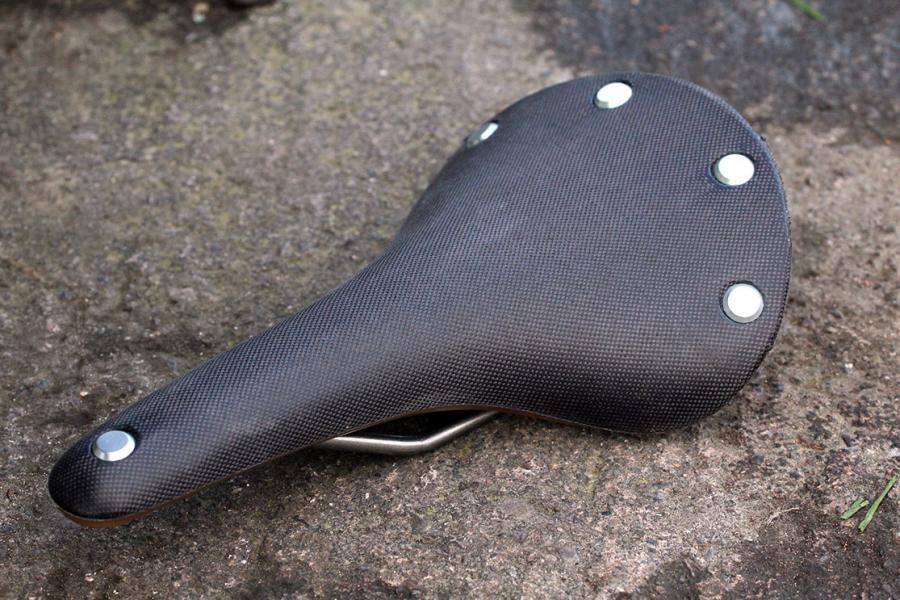
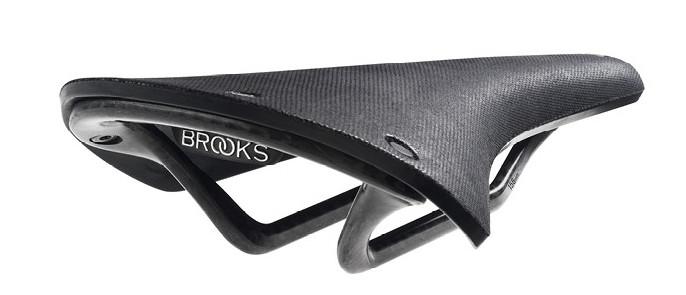
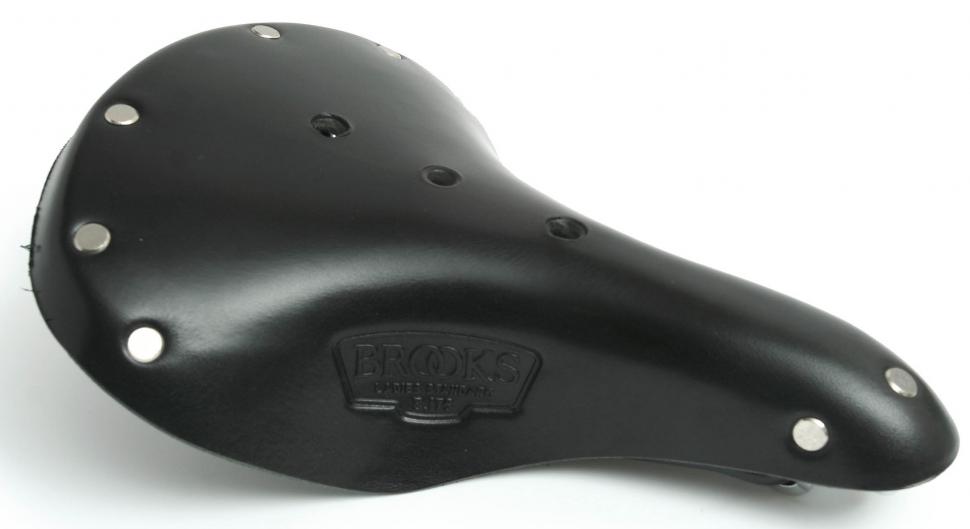
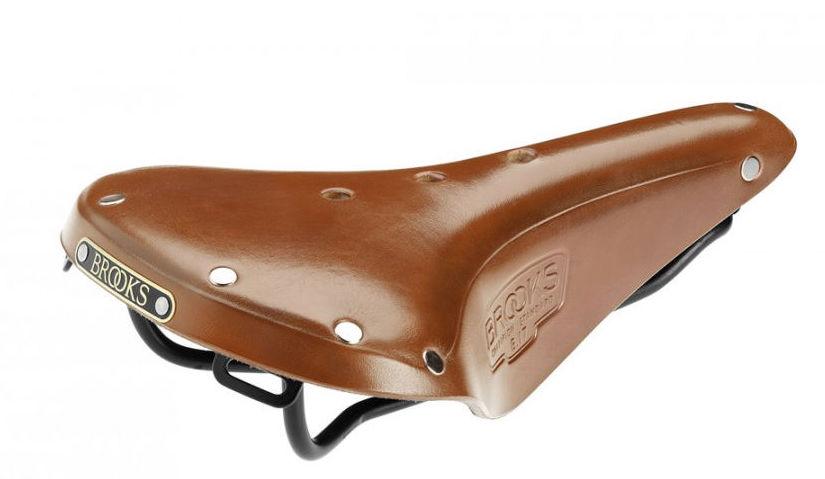
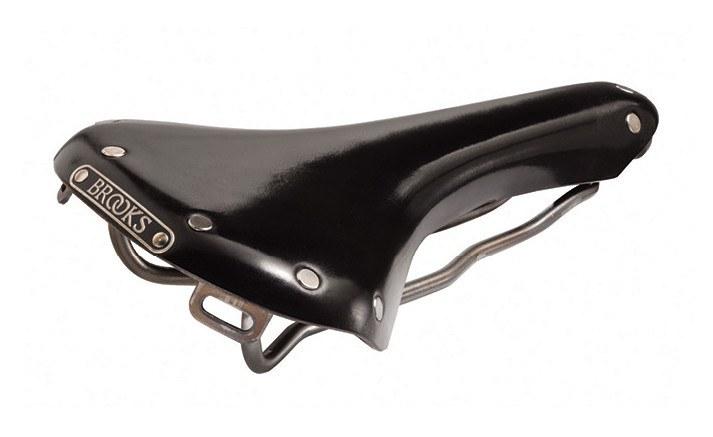
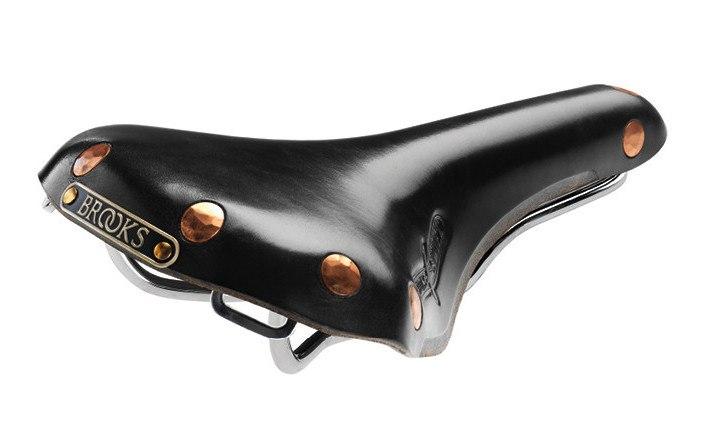
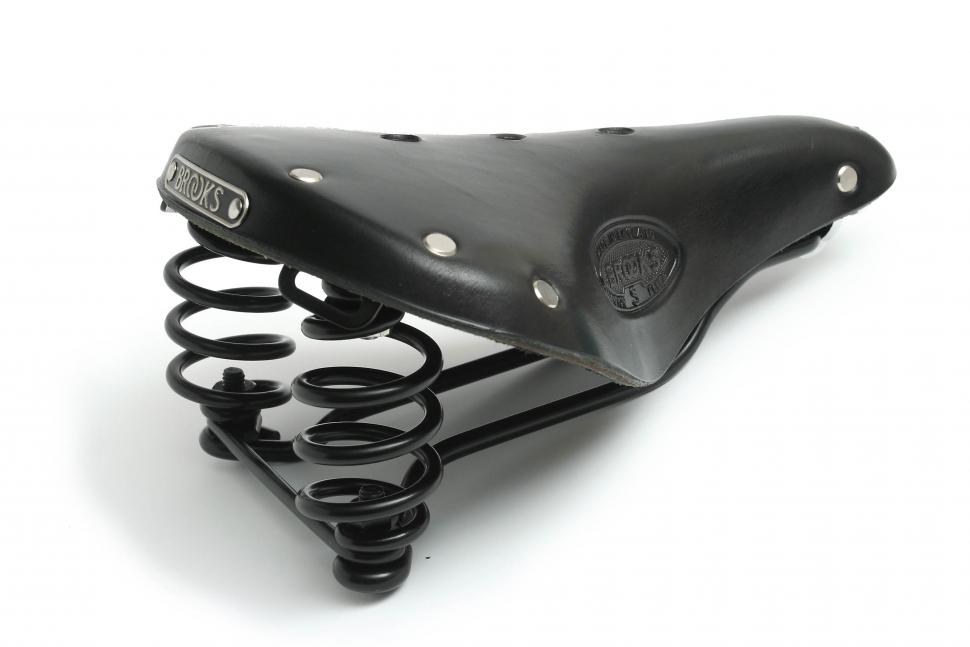
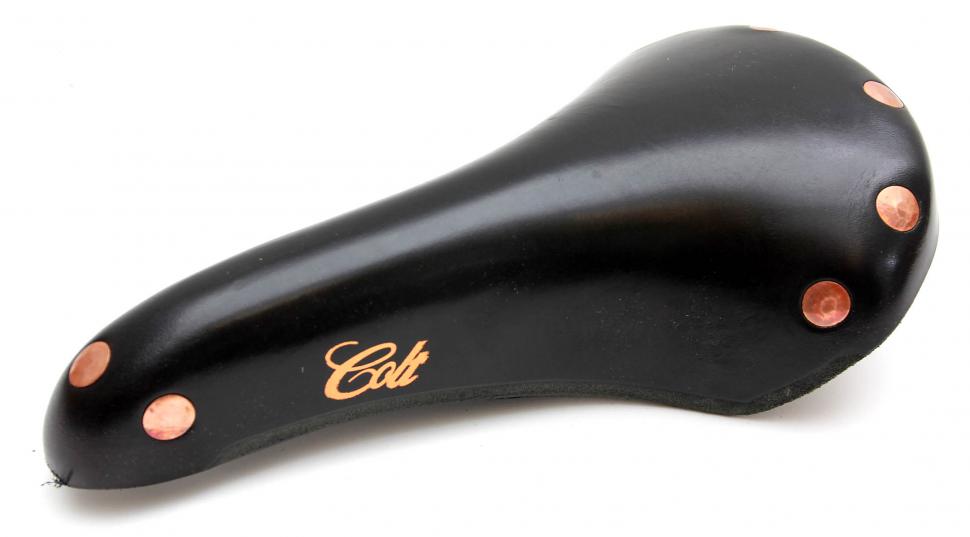

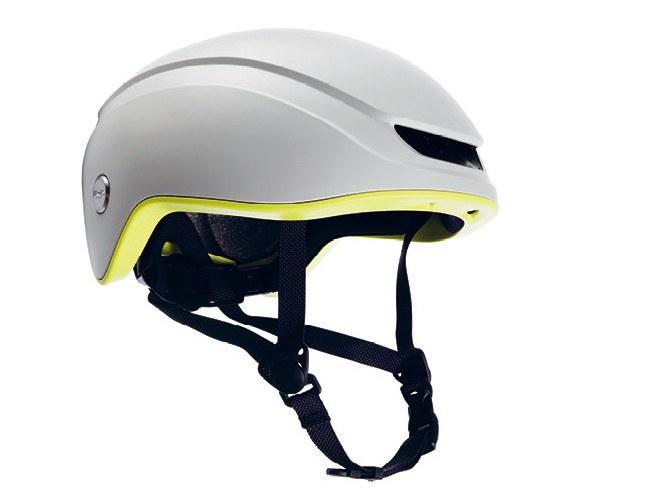
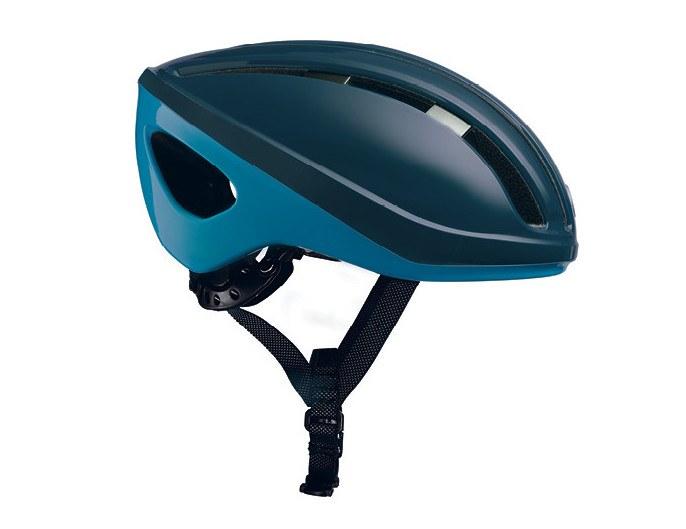
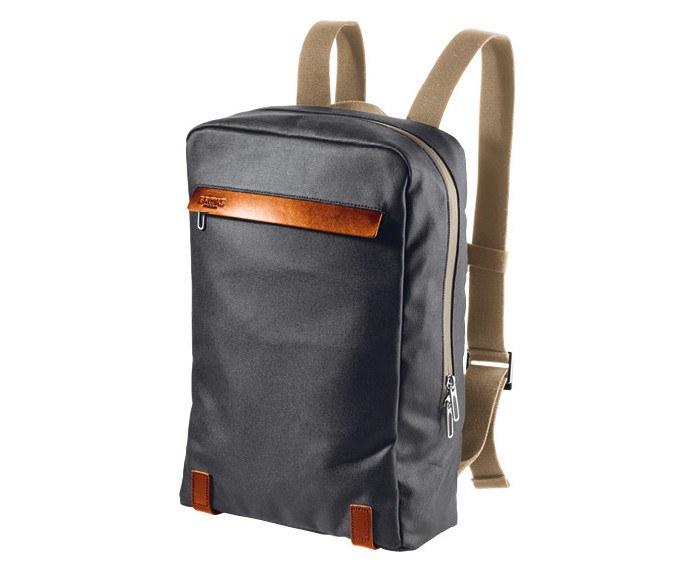



Add new comment
17 comments
As a larger rider (120kgs+) I've found my new B17 Flyer instantly comfortable - even in unpadded shorts and normal underwear. Bit of a revelation. No issues whatsoever with sit-bone soreness and now I'l thinking of getting a B17 standard for my "fast" bike. I'm guessing it either just suits me or it's the fact I'm heavy. I'd imagine if you're a 65kg whippet it will never break in.
If you put the provide on the underneath of the saddle it softens a lot quicker
I have 2 B17's
The one on my tourer is about 20+ years old, and is a bit more comfortable than when I bought it. Durable? - on another bike it's been run over!
The one on my Brompton is about 2 years old, and was more comfortable than the original ever has been from day one! Maybe 'cos I used neatsfoot oil on it - which is an oops nowadays, according to the care instructions that I read after applying neatsfoot . BTW the neatsfoot darkened the honey colour to a nice rich brown.
. BTW the neatsfoot darkened the honey colour to a nice rich brown.
I was struggling to find a saddle comfortable enough to ride all day when approaching a four day coast to coast ride.
At the last minute I got a B17 and never looked back, comfortable from the off.
Not having to worry about my saddle made the ride much more enjoyable.
I had tried a couple of B17s a slightly used one and a brand new Imperial. They were genuine ball breakers. Their real problem is that even if they have a correct shape, they slide so much that you will be constantly in the wrong position. I will very hardly betray Specialized saddles or maybe their chinese full CF copies.
My B17 with copper rivets was so uncomfortable when I bought it I thought I'd never break it in! After 1000 miles, it was still like a plank despite many applications of proofide. Now however after about 2500 miles it's almost comfortable, often wondered if there's too much tension on the leather, as I'm assured by everyone who has them that after 500 miles, they're like an armchair!
Sounds like you don't have enough meat on the bone lad, get tha sell downt butchers.
I oftenwondered if it was weight related or even dependant on how much of your weight you put on to the saddle as to how long it takes to break in. If you've a more upright position maybe takes shorter compared to another one of you more on the rivet as it were.
quicker if you ride the 500 miles naked and use lard instead of chamois cream
Good advert. 'Team pro' is left out, I've had and got a few of these and find them absolutely wonderful, I found the B17 a little wide and soft. The Team Pro seems to use slightly thicker and/or stiffer leather. A fair bit of variation though between samples in terms of grain, colouring, riveting etc, I've always gone to a shop to buy so I can choose the best one. This applies to all models I've found.
Things of wonder. That being said, saddles and shorts are the two items which (in my opinion) affect comfort, and everybody is different so of course may not have the same experience.
Oops, just have done . It's going on my 2015 Giant Defy Advanced 2 which currently has tan Charge Scoop and tan bar tape.
. It's going on my 2015 Giant Defy Advanced 2 which currently has tan Charge Scoop and tan bar tape.
I'm seriously thinking about pulling the trigger on a B17 in honey...
go on, you really should
IMG_1901.JPG
For a tool that can be bought for about £7 they most defintely are ripping punters of for a little pocket and embossing their name on the side.
I've had a 17S, professional (rare french version with 'Selle Rodee Main' embossed into the seat), a Swallow, an old rotted hammock style that was barely intact that I used on a home-built recumbent and now 2 swifts, one on my audax
when you can easily spend £100-£150 on a saddle these days added into which the manufacturers are telling you need to replace every 18months or so, a Brooks seems like an absolute steal to be honest.
I've heard similar stories that they aren't too kind to lycra, also I wonder if the breaking in of a Brooks is an urban myth, my B17 was great from day one and appears to be the same shape as when I bought it !
My C15 acted like a cheese grater on a pair of Rapha Pro Team Lightweight bibs. More resilient shorts (Rapha Classic, Rapha 3/4, Velobici Mylar, and Hoy Vulpine) have not been affected.
Hmmmm. Silly question probably but doesn't the fabric and weave Cambium create a little friction compared with smooth leather?
My older Selle saddle was a gel and fabric model and starting to fray - which was also starting to wear at my shorts so i just bought a new one and it's aso much easier to shift around in the saddle with a smooth leather surface.
Or at least until it disappears with your bike when stolen. You probably don't need to ask how I know this.